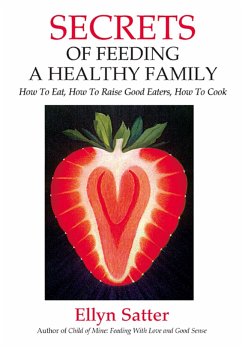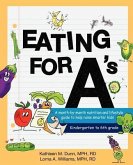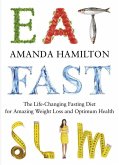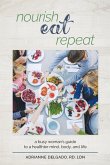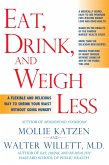Ellyn Satter
Secrets of Feeding a Healthy Family: How to Eat, How to Raise Good Eaters, How to Cook
18,99 €
inkl. MwSt.
Versandfertig in über 4 Wochen

9 °P sammeln
Ellyn Satter
Secrets of Feeding a Healthy Family: How to Eat, How to Raise Good Eaters, How to Cook
- Broschiertes Buch
- Merkliste
- Auf die Merkliste
- Bewerten Bewerten
- Teilen
- Produkt teilen
- Produkterinnerung
- Produkterinnerung
Secrets of Feeding a Healthy Family Encourages you to have meals that are richly rewarding to plan, prepare, and at--and shows you how. Provides entertaining and practical and cooking and food lessons for the novice as well as the seasoned cook. gives guidelines for raising good eaters, adapting menus for your children and involving kids in the kitchen. Reviewer comments Its wonderful when she says, "love good food, trust yourself, and share that love and trust with your children." Encouraging people to eat well is far better than laying out all the rules. Though I have read cookbooks all my…mehr
Andere Kunden interessierten sich auch für
![Eating for A's Eating for A's]() Kathleen Margaret DunnEating for A's23,99 €
Kathleen Margaret DunnEating for A's23,99 €![Eat, Fast, Slim Eat, Fast, Slim]() Amanda HamiltonEat, Fast, Slim14,99 €
Amanda HamiltonEat, Fast, Slim14,99 €![Dr. Anne Good Health at Hand- Quick Start: Your own lifelong way to eat, exercise and meditate Dr. Anne Good Health at Hand- Quick Start: Your own lifelong way to eat, exercise and meditate]() Anne SeifertDr. Anne Good Health at Hand- Quick Start: Your own lifelong way to eat, exercise and meditate21,99 €
Anne SeifertDr. Anne Good Health at Hand- Quick Start: Your own lifelong way to eat, exercise and meditate21,99 €![Nourish, Eat, Repeat Nourish, Eat, Repeat]() Adrianne DelgadoNourish, Eat, Repeat24,99 €
Adrianne DelgadoNourish, Eat, Repeat24,99 €![The Key to a Healthy Digestion The Key to a Healthy Digestion]() Tansy BriggsThe Key to a Healthy Digestion18,99 €
Tansy BriggsThe Key to a Healthy Digestion18,99 €![Eat, Live, Thrive Diet Eat, Live, Thrive Diet]() Danna DemetreEat, Live, Thrive Diet17,99 €
Danna DemetreEat, Live, Thrive Diet17,99 €![Eat, Drink, & Weigh Less Eat, Drink, & Weigh Less]() Mollie KatzenEat, Drink, & Weigh Less21,99 €
Mollie KatzenEat, Drink, & Weigh Less21,99 €-
-
-
Secrets of Feeding a Healthy Family Encourages you to have meals that are richly rewarding to plan, prepare, and at--and shows you how. Provides entertaining and practical and cooking and food lessons for the novice as well as the seasoned cook. gives guidelines for raising good eaters, adapting menus for your children and involving kids in the kitchen. Reviewer comments Its wonderful when she says, "love good food, trust yourself, and share that love and trust with your children." Encouraging people to eat well is far better than laying out all the rules. Though I have read cookbooks all my life, I've never before believed I could eat anything in them. Secrets lets me see what a normal menu really is and made food safe for eating. I can't tell you how often I refer to Secrets as my favorite all-around nutrition information book.
Hinweis: Dieser Artikel kann nur an eine deutsche Lieferadresse ausgeliefert werden.
Hinweis: Dieser Artikel kann nur an eine deutsche Lieferadresse ausgeliefert werden.
Produktdetails
- Produktdetails
- Verlag: Kelcy Press
- Second
- Seitenzahl: 256
- Erscheinungstermin: Oktober 2008
- Englisch
- Abmessung: 254mm x 180mm x 17mm
- Gewicht: 569g
- ISBN-13: 9780967118925
- ISBN-10: 0967118921
- Artikelnr.: 22534927
- Herstellerkennzeichnung
- Libri GmbH
- Europaallee 1
- 36244 Bad Hersfeld
- gpsr@libri.de
- Verlag: Kelcy Press
- Second
- Seitenzahl: 256
- Erscheinungstermin: Oktober 2008
- Englisch
- Abmessung: 254mm x 180mm x 17mm
- Gewicht: 569g
- ISBN-13: 9780967118925
- ISBN-10: 0967118921
- Artikelnr.: 22534927
- Herstellerkennzeichnung
- Libri GmbH
- Europaallee 1
- 36244 Bad Hersfeld
- gpsr@libri.de
Readers say that Ellyn Satter's books transformed their lives: Satter writes not only about food, eating, and feeding, but about emotional health and positive family relationships. Satter gives her blessings to all food, and to you for eating it, by sharing her conviction that you and your family are more important than your diet. Satter's research confirms that being positive and self-trusting with respect to food and eating does more for your nutritional, medical, and emotional health than adhering to a set of rules about what to eat and not to eat. Will letting yourself be positive and joyful with eating make you fat? Despite your worst fears, it will not. People who are competent with eating-who approach food and eating with optimism, self-trust, and curiosity-weigh less than those who guide their eating with negativity, self-denial, and avoidance.
1. The Secret in a Nutshell. When the joy goes out of eating, nutrition
suffers.
PART I, HOW TO EAT
Prologue. The eating competence model says to celebrate eating and take
good care of yourself with food. It says nothing about what or how much to
eat.
2. Adjust Your Attitude. Competent eaters enjoy food and eating. They feel
it is okay to eat food that they like in amounts they find satisfying.
3. Honor Your Appetite. Appetite is compelling, but it can be satisfied.
4. Eat as Much as You Want. Essential to eating's rich reward is having
enough to eat.
5. Feed Yourself Faithfully. To develop the meal habit, prioritize
pleasure.
Epilogue. Eating competence is made up of the permission to eat food you
enjoy in amounts you find satisfying and the discipline to feed yourself
regularly and reliably and pay attention while you eat.
PART II, HOW TO RAISE GOOD EATERS
Prologue. Provided parents do their jobs with feeding, children eat as much
or as little as they need and grow predictably.
6. The Feeding Relationship. Maintain a division of responsibility: Parents
do the what, when, and where of feeding; Children do the how much and
whether of eating.
7. Stuff to Know to Have Family Meals. How to have pleasant mealtimes:
Orchestrate snacks; Make wise use of controlled substances; Manage family
meals in restaurants.
Epilogue. When raising children, give it your best effort, find out if it
works, then tinker with it.
PART III, HOW TO COOK
Prologue. To celebrate eating and take good care of yourself with food,
cook and keep on cooking.
8. How to Get Cooking. Build a foundation for being a good, fast,
efficient, and wholesome cook.
9. How to Keep Cooking. Like eating, cooking can be an energizing creative
act.
10. Enjoy Vegetables and Fruits. Eat vegetables and fruits because you
enjoy them, not because you feel obligated.
11. Planning to Get You Cooking. Planning can be used or abused. Use
planning to lower your stress level, not to pile on jobs.
12. Shopping to Get You Cooking. To plan and cook a meal - or to grab the
ingredients to throw one together - you have to shop.
13. Choosing Food. Optimism, self-trust and adventure are good motivators.
Negativity, fear, and avoidance are not.
Epilogue. Mastery in any of the three areas - how to eat, how to raise good
eaters and how to cook - increases your mastery in the other two.
APPENDIXES
1. Interpreting and Using the ecSatter Inventory (ecSI)
2. What the Research Says about Meals
3. What Surveys Say about Our Eating
4. BMI, Mortality, Morbidity, and Health: Resolving the Weight Dilemma
5. Energy Balance and Weight
6. Select Foods That Help Regulation
7. Nutrition Education in the Schools
8. Children and Food Regulation: The Research
9. Children and Food Acceptance: The Research
10. Iron in Your Child's Diet
11. Diet and Degenerative Disease: It's Not as Bad as You Think
12. Children, Dietary Fat, and Heart Disease: You Don't Have to Panic
13. A Primer on Dietary Fat
14. Sodium in Your Diet
15. Interpreting the News
suffers.
PART I, HOW TO EAT
Prologue. The eating competence model says to celebrate eating and take
good care of yourself with food. It says nothing about what or how much to
eat.
2. Adjust Your Attitude. Competent eaters enjoy food and eating. They feel
it is okay to eat food that they like in amounts they find satisfying.
3. Honor Your Appetite. Appetite is compelling, but it can be satisfied.
4. Eat as Much as You Want. Essential to eating's rich reward is having
enough to eat.
5. Feed Yourself Faithfully. To develop the meal habit, prioritize
pleasure.
Epilogue. Eating competence is made up of the permission to eat food you
enjoy in amounts you find satisfying and the discipline to feed yourself
regularly and reliably and pay attention while you eat.
PART II, HOW TO RAISE GOOD EATERS
Prologue. Provided parents do their jobs with feeding, children eat as much
or as little as they need and grow predictably.
6. The Feeding Relationship. Maintain a division of responsibility: Parents
do the what, when, and where of feeding; Children do the how much and
whether of eating.
7. Stuff to Know to Have Family Meals. How to have pleasant mealtimes:
Orchestrate snacks; Make wise use of controlled substances; Manage family
meals in restaurants.
Epilogue. When raising children, give it your best effort, find out if it
works, then tinker with it.
PART III, HOW TO COOK
Prologue. To celebrate eating and take good care of yourself with food,
cook and keep on cooking.
8. How to Get Cooking. Build a foundation for being a good, fast,
efficient, and wholesome cook.
9. How to Keep Cooking. Like eating, cooking can be an energizing creative
act.
10. Enjoy Vegetables and Fruits. Eat vegetables and fruits because you
enjoy them, not because you feel obligated.
11. Planning to Get You Cooking. Planning can be used or abused. Use
planning to lower your stress level, not to pile on jobs.
12. Shopping to Get You Cooking. To plan and cook a meal - or to grab the
ingredients to throw one together - you have to shop.
13. Choosing Food. Optimism, self-trust and adventure are good motivators.
Negativity, fear, and avoidance are not.
Epilogue. Mastery in any of the three areas - how to eat, how to raise good
eaters and how to cook - increases your mastery in the other two.
APPENDIXES
1. Interpreting and Using the ecSatter Inventory (ecSI)
2. What the Research Says about Meals
3. What Surveys Say about Our Eating
4. BMI, Mortality, Morbidity, and Health: Resolving the Weight Dilemma
5. Energy Balance and Weight
6. Select Foods That Help Regulation
7. Nutrition Education in the Schools
8. Children and Food Regulation: The Research
9. Children and Food Acceptance: The Research
10. Iron in Your Child's Diet
11. Diet and Degenerative Disease: It's Not as Bad as You Think
12. Children, Dietary Fat, and Heart Disease: You Don't Have to Panic
13. A Primer on Dietary Fat
14. Sodium in Your Diet
15. Interpreting the News
1. The Secret in a Nutshell. When the joy goes out of eating, nutrition
suffers.
PART I, HOW TO EAT
Prologue. The eating competence model says to celebrate eating and take
good care of yourself with food. It says nothing about what or how much to
eat.
2. Adjust Your Attitude. Competent eaters enjoy food and eating. They feel
it is okay to eat food that they like in amounts they find satisfying.
3. Honor Your Appetite. Appetite is compelling, but it can be satisfied.
4. Eat as Much as You Want. Essential to eating's rich reward is having
enough to eat.
5. Feed Yourself Faithfully. To develop the meal habit, prioritize
pleasure.
Epilogue. Eating competence is made up of the permission to eat food you
enjoy in amounts you find satisfying and the discipline to feed yourself
regularly and reliably and pay attention while you eat.
PART II, HOW TO RAISE GOOD EATERS
Prologue. Provided parents do their jobs with feeding, children eat as much
or as little as they need and grow predictably.
6. The Feeding Relationship. Maintain a division of responsibility: Parents
do the what, when, and where of feeding; Children do the how much and
whether of eating.
7. Stuff to Know to Have Family Meals. How to have pleasant mealtimes:
Orchestrate snacks; Make wise use of controlled substances; Manage family
meals in restaurants.
Epilogue. When raising children, give it your best effort, find out if it
works, then tinker with it.
PART III, HOW TO COOK
Prologue. To celebrate eating and take good care of yourself with food,
cook and keep on cooking.
8. How to Get Cooking. Build a foundation for being a good, fast,
efficient, and wholesome cook.
9. How to Keep Cooking. Like eating, cooking can be an energizing creative
act.
10. Enjoy Vegetables and Fruits. Eat vegetables and fruits because you
enjoy them, not because you feel obligated.
11. Planning to Get You Cooking. Planning can be used or abused. Use
planning to lower your stress level, not to pile on jobs.
12. Shopping to Get You Cooking. To plan and cook a meal - or to grab the
ingredients to throw one together - you have to shop.
13. Choosing Food. Optimism, self-trust and adventure are good motivators.
Negativity, fear, and avoidance are not.
Epilogue. Mastery in any of the three areas - how to eat, how to raise good
eaters and how to cook - increases your mastery in the other two.
APPENDIXES
1. Interpreting and Using the ecSatter Inventory (ecSI)
2. What the Research Says about Meals
3. What Surveys Say about Our Eating
4. BMI, Mortality, Morbidity, and Health: Resolving the Weight Dilemma
5. Energy Balance and Weight
6. Select Foods That Help Regulation
7. Nutrition Education in the Schools
8. Children and Food Regulation: The Research
9. Children and Food Acceptance: The Research
10. Iron in Your Child's Diet
11. Diet and Degenerative Disease: It's Not as Bad as You Think
12. Children, Dietary Fat, and Heart Disease: You Don't Have to Panic
13. A Primer on Dietary Fat
14. Sodium in Your Diet
15. Interpreting the News
suffers.
PART I, HOW TO EAT
Prologue. The eating competence model says to celebrate eating and take
good care of yourself with food. It says nothing about what or how much to
eat.
2. Adjust Your Attitude. Competent eaters enjoy food and eating. They feel
it is okay to eat food that they like in amounts they find satisfying.
3. Honor Your Appetite. Appetite is compelling, but it can be satisfied.
4. Eat as Much as You Want. Essential to eating's rich reward is having
enough to eat.
5. Feed Yourself Faithfully. To develop the meal habit, prioritize
pleasure.
Epilogue. Eating competence is made up of the permission to eat food you
enjoy in amounts you find satisfying and the discipline to feed yourself
regularly and reliably and pay attention while you eat.
PART II, HOW TO RAISE GOOD EATERS
Prologue. Provided parents do their jobs with feeding, children eat as much
or as little as they need and grow predictably.
6. The Feeding Relationship. Maintain a division of responsibility: Parents
do the what, when, and where of feeding; Children do the how much and
whether of eating.
7. Stuff to Know to Have Family Meals. How to have pleasant mealtimes:
Orchestrate snacks; Make wise use of controlled substances; Manage family
meals in restaurants.
Epilogue. When raising children, give it your best effort, find out if it
works, then tinker with it.
PART III, HOW TO COOK
Prologue. To celebrate eating and take good care of yourself with food,
cook and keep on cooking.
8. How to Get Cooking. Build a foundation for being a good, fast,
efficient, and wholesome cook.
9. How to Keep Cooking. Like eating, cooking can be an energizing creative
act.
10. Enjoy Vegetables and Fruits. Eat vegetables and fruits because you
enjoy them, not because you feel obligated.
11. Planning to Get You Cooking. Planning can be used or abused. Use
planning to lower your stress level, not to pile on jobs.
12. Shopping to Get You Cooking. To plan and cook a meal - or to grab the
ingredients to throw one together - you have to shop.
13. Choosing Food. Optimism, self-trust and adventure are good motivators.
Negativity, fear, and avoidance are not.
Epilogue. Mastery in any of the three areas - how to eat, how to raise good
eaters and how to cook - increases your mastery in the other two.
APPENDIXES
1. Interpreting and Using the ecSatter Inventory (ecSI)
2. What the Research Says about Meals
3. What Surveys Say about Our Eating
4. BMI, Mortality, Morbidity, and Health: Resolving the Weight Dilemma
5. Energy Balance and Weight
6. Select Foods That Help Regulation
7. Nutrition Education in the Schools
8. Children and Food Regulation: The Research
9. Children and Food Acceptance: The Research
10. Iron in Your Child's Diet
11. Diet and Degenerative Disease: It's Not as Bad as You Think
12. Children, Dietary Fat, and Heart Disease: You Don't Have to Panic
13. A Primer on Dietary Fat
14. Sodium in Your Diet
15. Interpreting the News
